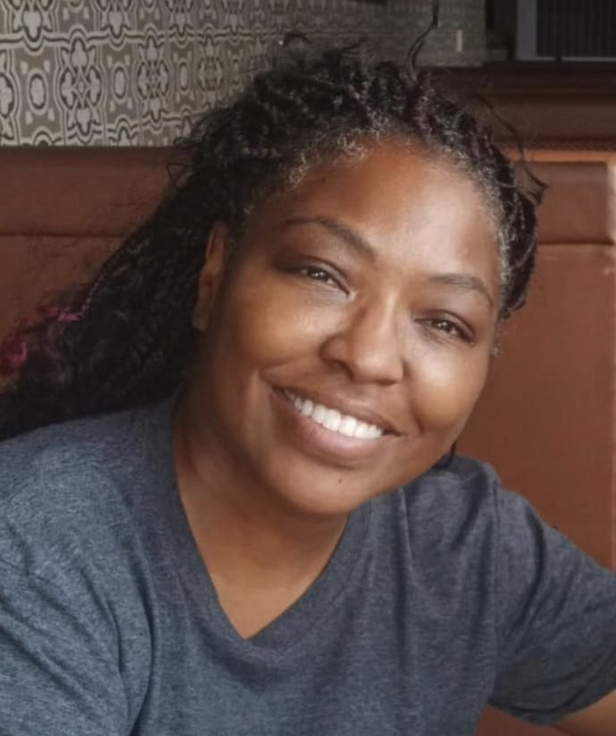Melody Allen
August 1, 2015
Recently, I read a poignant article in the NY TImes that touted the pictures of the
iPhone commands Decline or Accept, in their perspective boxes. In summary, the
author recanted a story about a missed phone call from her dear friend. The author
purposefully avoided her friend's burdened call filled with lament about her divorce. After
days of dodging calls with Tweets, texts and other cyber madness she returned the call.
To her surprise and delight, the crisis was over, but she felt awful that she had failed to
be a more generous and attentive friend. After the bout of ill conscience, she vowed to
change her practice and be more available for personable contact between loved ones
and friends. After her new commitment, she noticed that people were not reaching out
to make contact. Her phone had not rung. Clearly, her previous avoidant
communicative patterns had trained her friends to keep their distance. The author
concluded that intimate distance was the destiny of those enslaved by the technological
world.
What I perceived the author missed was her participation in her own isolation. Her
environment was only reflecting her sustained practices with friends, colleagues and
acquaintances. In a world where materialism, intimacy divergence and competition are
our favored modus oprendi; close relationships become relics. What she missed is that
genuine, healthy relationships require a mutually agreed upon reciprocity, in order for
them to continue. This need for give and talk in relationship acts like bonding glue since
these relationships don't generally have the emotional strength of family connections.
This being said, in times of need, those closest to us may not be capable or available to
hear our woes and excitements. When these times come, it is necessary to have a
support team. One significant person on this team is a therapist.
In my clinical opinion, this NY Times article validated the need for psychotherapy or "talk
therapy ", as it is sometimes referred. In an age where quality time, for self and others,
is not a high priority; counseling acts a sacred space where one can share, complain,
grieve, and vent about private concerns. In this story, the distressed divorcee needed
someone to disclose the details of her divorce. While the reluctant friend needed
someone to talk about her inability to lovingly communicate clear boundaries: She did
not want to be her friend’s continued confidant about her divorce. Instead of expressing
this fact, she used non-direct communication to avoid person-to-person contact.
The therapeutic space affords three assurances: confidentiality, support, and rapport.
Some theorists believe much of the healing in therapy is derived from the nurturing, safe
relationship developed between the therapist and his/her client. The therapist is in
service of the client and is trained to be self-aware of biases, projections,transferences
and judgements that potentially cloud some of our closest alliances. It is my sincere
hope that the human need for contact leads more people to an experience of intimacy and understanding.
By Melody Allen, MA, PMA, LPC-S
My healing journey started from my own outpouring of grief and misunderstanding about being a single woman older than 30.
When I talked with friends and family about this matter, I met responses ranging from “Have you prayed?” to “How are you sabotaging yourself?” and “Look who you’re picking!” I later realized that these unsupported comments arose from people’s inability to handle the anxiety of not having an answer for me. I decided to stop complaining and accept singledom as my present state. There was nothing I could do about it until the time came for “IT” to change.
Just bringing up the topic of being single used to give me a visceral reaction, rooted in the shame and blame that society puts on unmarried, childless young women. In alignment with our 2017 North American Systemic Constellations Conference theme “Bridging the Divide: Healing the Personal and Collective Soul,” I have seen so many divides when it come to finding love and lasting partnership.
Some of these divides – to name a few – are the social push to devalue monogamy and marriage, implicit rules for woman to be married and bear children, career versus family life, as well as bouts between blended families in committed unions.
It wasn’t until I found Family and Systemic Constellations that I understood one part of partner selection that was directly related to epigenetics. Epigenetics is the science behind how humans replicate behaviors of previous generations – consciously or unconsciously. This can only be healed by exploring the family tree and healing old traumas and misunderstandings.
Commonly seen themes in Family Constellations sessions that affect romantic relationships include what is called the “interrupted reaching out movement,” which refers to difficulties with attachment, as well as parentification of a child, where the child takes adult responsibilities, and unhealthy family entanglements, which prevent the adult from moving forward into his or her own fulfilling life.
The books that most fueled my inquiry were Love's Hidden Symmetry by Bert Hellinger, the German family therapist who developed Family Constellations, and his colleagues Gunthard Weber and Hunter Beaumont, and The Healing Power of the Past by Bertold Ulsamer.
Both texts helped me see how we replicate knowingly and unknowingly the relationships we have experienced with our biological family, including the family of origin, extended family and ancestral family. Systemic and Family Constellations quiets the argument of nature versus nurture by connecting each participant with his or her behavioral inheritance.
I also realized that the unsupported comments from friends and family arose from their inability to handle the anxiety of not having an answer for me. I decided to stop complaining and accept singledom as my present state. There was nothing I could do about it until the time came for “it” to change.
Now, after years of schooling and attaining skills necessary for self-reflection, I have found that, simply put, “It is what it is.”
“It” is a temporary state of being that will shift when the time is right. Now I can share my story with people and I can recognize others' grief, a particular type of grief and another divide that is not widely acknowledged — the loneliness and social separation of singledom.
The goal of this article is to encourage singles who would like to have a relationship to use Family Constellations for inquiry and investigation. Or if you are already in a relationship, use constellations to further differentiate from your family origin and bond more deeply with your spouse or partner.
Family Constellations sessions prove helpful in discovering how our actions are a help or a hindrance to our dream of being happily coupled. While we are single, it is so important to raise our consciousness about the need for compassion and patience for ourselves.
For singles, it is so important to raise our consciousness, compassion, and patience for different stages of life.
To date, I would say I am a Family Constellations success story. My healed coupled heart smiles at a trek already traveled and revealed.
About the author
Melody Allen, MA, PMA, LPC-S, is co-director of the 2017 North American Systemic Constellations Conference. She is a licensed professional counselor in Sugarland, Texas. Her theoretical style blends systems theory, depth psychology, positive psychology, Barbara Brennan Healing Science, mind-body consciousness and Family and Systemic Constellations. Her Ph.D. research is focused on the correlation between epigenetics and family therapy. Melody works with families and individuals seeking life change in her private practice and supervises LPC-interns who are seeking a career in mental health.
5/10/2017
By Melody Allen, MA, EAS-C, LPC-S
During winter break, I flew to Washington, D.C., to visit Betsy Hostetler for a weekend work meeting for conference preparation. Betsy and I are co-directors of the North American Systemic Constellations Conference, planned Oct. 5-8 in Virginia.
Our task has been to organize, invite, and appoint a team of volunteers to offer keynotes, featured presentations and panel discussions to the North American audience of systemic constellations, a methodology founded by Bert Hellinger from combined studies in Zulu tradition, transactional analysis and family systems theories. The philosophies are applied in all career disciplines for family and business problem solving.
In between our planning meetings, Betsy and I had the opportunity to visit the National Museum of African American History and Culture.
The museum is devoted to the documentation of African American life, history and culture. It was established to promote and highlight the contributions of African Americans.
The museum has collected more than 36,000 artifacts and nearly 100,000 individuals have become charter members. The Museum opened to the public on September 2016, as the 19th and newest museum of the Smithsonian Institution. The museum has been all the rage for art enthusiasts, educators, museum lovers, American history buffs and cultural activists.
The wind was blowing so cold on my warm Texas skin as we waited in the supposed VIP line which was just as long as regular admission: I had scored some prime tickets from a long-term client and museum patron.
As we waited, a checkered audience filed into line: children on field trips, church groups and individuals all sizes and colors. The museum trek began with a dramatic elevator ride back in time to the bowels of a slave ship. We were immediately drawn into an experiential journey of long ago. As visitors walk the ramps from floor to floor, they are transported along the timeline of slavery to modern-day race relations among blacks and whites in North America.
The museum was so profound and traumatizing at the same time. It was so hard to see and feel the years of oppression and the abusive nature of mankind. The museum evidenced many offenses toward Black America at the hands of White America: some of these crimes in today’s vernacular would be named human trafficking, labor exploitation, unlawful imprisonment, assault, assault with deadly weapons, rape, police brutality, unfair wage practices, and educational depravity.
As I walked through the halls, I was filled not only with rage but also with hope since I can function in daily life with some modicum of safety.
Yet, as I saw the pictures of my ancestral lineage, I began to think of modern-day stories of racism that should not be happening but be as relics in a like museum. I thought about the book entitled The New Jim Crow: Mass Incarceration in the Age of Colorblindness which speaks to the over-incarceration of black males, the documentary 13th, which is a play on words about the 13th Amendment that abolishes slavery and refers to a new model of slavery in the privatized prison setting, and all the mothers who have lost their black boys and men to recent police brutality.
On the other hand, it was also profound to be visiting with Betsy, a tall white woman from the North, with me, a short black woman from the South, and be able to hold honest and frank conversations about related and divergent topics.
The weekend continued with a visit to a movie that Betsy recommended. The movie was "I Am Not Your Negro," a documentary based on author and activist James Baldwin, who was ironically the author of “The Native Son.” Our cinematic event followed a movie on my plane trip to Washington called Loving, about a highly publicized and harassed interracial couple in Virginia, the location of the conference, that took place in the 1950s and 1960s. Although the museum visit was not the intention of the weekend, it definitely was a great background for one of the conference themes, that of social justice. My story of the museum is only one of the constructs that we have to uncover to heal America.
As a believer in the Jungian concept of synchronicity, it felt so relevant and apropos that as leaders of this 2017 North American Systemic Constellations Conference we would be exploring differences and cultural themes.
It also fit with the conference theme of “Bridging the Divide: Healing the Personal and Collective Soul,” as well as our desire as conference co-directors to explore social justice. We were not just talking but also living how to have difficult conversations and facilitate understanding, compassion, resilience and responsible communication.
I was happy that Betsy had a genuine interest in visiting the museum and not just a cursory interest. I don’t particularly identity myself as an activist but rather an academician. However, when it comes to having a voice, sometimes to have a voice the two worlds meet. So the purpose of this blog article is to further invite and entice each person’s truth into the conference space.
It was a great foreshadowing about the type of work that I believe can come out of the North American Systemic Constellations Conference. If there are any people who feel like the conference can't hold their story, please know that the conference steering team is preparing to be expansive and diverse in invitation and execution.























